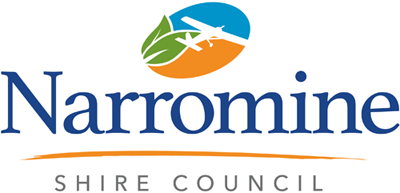Types of Council Approvals
Development, Construction & Subdivision
Development and construction work may be subject to approval or may be classed as 'exempt development'. Development that has minimal environmental impacts and fills a specific criteria is exempt from requiring approval. The full list of exempt developments which apply in NSW Councils including Narromine can be found on the NSW legislation website:
Development that has predictable and manageable impacts, and complies with specific criteria may be 'complying development'. If the development is able to be approved with a Complying Development Certificate (CDC) you can apply to either Council or a Private Certifier for approval. Complying development is split into nine (9) separate Codes under the Code SEPP and include:
- General Housing
- Rural Housing
- General Development
- Commercial and Industrial Alterations
- Commercial and Industrial (New Buildings and Additions)
- Subdivision (for strata)
- Demolition
- Fire Safety
The full list of what constitutes complying development can be found on the NSW legislation website:
All other development requires 'development consent', via lodging a Development Application of ‘DA’ to Council, and if construction or subdivision are involved you may also require a 'construction certificate'. Development consent is the approval to use the land for that purpose and a construction certificate contains specific details on the construction of the building and approves the structure/road/drainage for construction.
| Types of Developments | Approvals | Impacts | Compliance | Other Approvals |
|---|---|---|---|---|
| Exempt Development | No Approval Required | Minimal Environmental Impacts | Must comply with established standards and criteria SEPP (Exempt & Complying Development Codes) 2008 | May require approval to make any changes to water, sewer or stormwater systems |
| Complying Development | Needs approval (Complying Development Certificate) - may also be approved by a Private Certifier. May be for subdivision and/or building work | Predictable and manageable impacts | Must comply with established standards and criteria SEPP (Exempt & Complying Development Codes) 2008 | May require approval to make any changes to water, sewer or stormwater systems |
| Development Consent | Development Application needs Council merit assessment and may require notification to neighbours who may potentially be affected by the development. May require approval or concurrence from other government organisations such as the RMS. | Could be major environmental impacts | Conditional approval Narromine Local Environmental Plan 2011 | May require a Construction Certificate to complete Subdivision and/or Construction work.
May require an Occupation Certificate to occupy the building. May require approval to make any changes to water, sewer or stormwater systems. May require a Traffic Management Plan |
| Construction Certificate | Requires approval (Construction Certificate) if not exempt or complying development.
Can be issued by Council or Private Certifier. Can be for construction and/or subdivision work |
Proposed work must comply with the requirements of the Building Code of Australia and relevant standards. | ||
| Integrated Development | Development Application with General Terms of Approval from another (Usually State) Government Authority. | Could be major environmental impacts. | Conditional Approval Narromine LEP 2011. | Required depending on state government authority approval. E.g. subdivision of bushfire prone land requires a bushfire safety authority under the Rural Fires Act 1997. This is issued by the NSW Rural Fire Service and fees to this authority are paid in addition to DA fees. |
| *NOTE: The following development types are larger/more complex. If your development falls into one of these categories you are advised to contact Council’s Planning Staff. | ||||
| Regionally Significant Development and Joint Regional Planning Panel (JRPP) | Development Application with comprehensive Statement of Environmental Effects. In case of Narromine, the Western Joint Regional Planning Panel determines the application. | Usually major, depending on development proposed. | Conditional approval Narromine LEP 2011. | Possibly required if also integrated development. |
| Designated Development | Designated DevelopmentDevelopment Application with Environmental Impact Statement (EIS). Schedule 3 of the EP&A Regulations 2000 outlines types of designated developments. Usually major, hence need for EIS. Conditional Approval Narromine LEP 2011. Possibly required depending on type of development proposed. | Usually major, hence need for EIS. | Conditional Approval Narromine LEP 2011. | Possibly required depending on type of development proposed. |
| State Significant Development | State Significant DevelopmentApproval falls under 2 categories: State Significant Development and State Significant Infrastructure Development Application with EIS submitted to the NSW Department of Planning and Environment. Usually major, hence need for EIS. Conditional Approval from NSW government. Depends of the type of development proposed. | Usually major, hence need for EIS. | Conditional Approval from NSW government. | Depends of the type of development proposed. |
